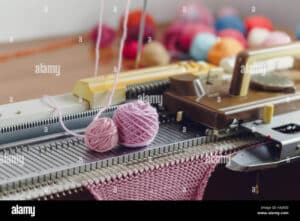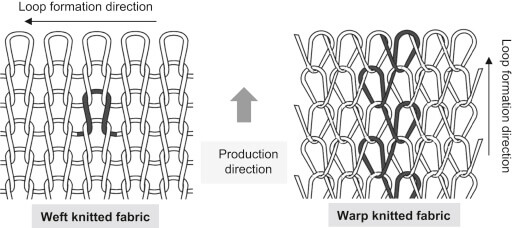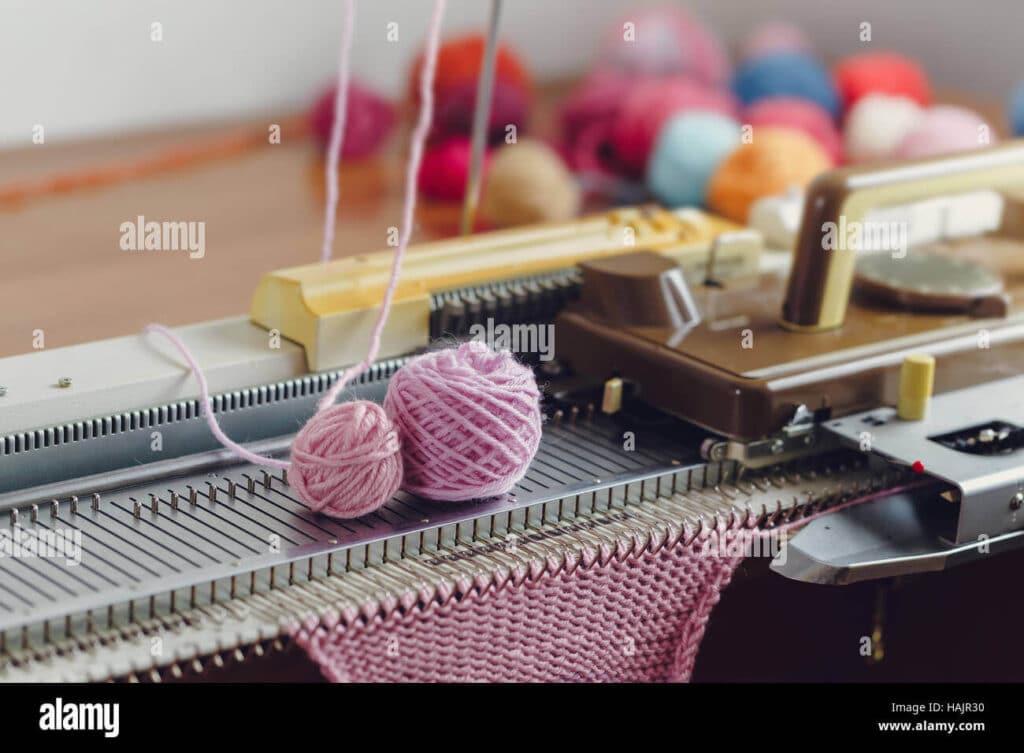Do you know your knit fabrics and how they are made? The more you know about fabrics, the easier it is to figure out how best to use them and decide what garment to make with them. Knitted fabrics are much easier and more comfortable to wear than woven fabrics.

Image Source: Alamy
An understanding of how knitted fabrics are made gives you an idea of what pattern will work for the various types. This guide will provide;
- a comprehensive details on how knitted fabrics are made,
- the two main categories,
- various types/examples, and
- their characteristics.
Stay glued as we unfold these!
What is the Knitting Process?

Image Source: iStock
The knitting process involves using long needles to interlock a series of loops into a continuous thread. Knitting forms stitches; that is, loops of yarn in a row, either round (tubular) or flat. Each loop gets connected into another, until a flat piece of material is created, called a textile.
Generally, the knitting process involves three stages;
- Casting On
- Knitting Stitches, and
- Casting Off
Each step is performed differently to achieve various patterns and textures in the fabric.
What are Knitted Fabrics?
Knitted fabrics are materials that have undergone the knitting process. It involves inter-meshing loops or interloping yarns that are later interconnected to form a textile structure. The fabrics are not woven but are made from elastic materials that are flexible, stretchy, and comfortable.
The primary raw materials for knit textiles are;
- Silk
- Cotton
- Linen
- Wool
- Rayon
- Viscose
Manufacturers add a variety of synthetic materials to enhance the durability and quality of knitted fabrics.
How are Knitted Fabrics Made?

Image Source: ScienceDirect.com
With a basic understanding of how knit fabrics are manufactured you will see why different knitted apparels behave in dissimilar ways. Detailed below are the fascinating steps into the production of knitted fabrics.
1. Select the Yarn
The first stage in making knitted fabrics is selecting the correct yarn for the fabric. This choice will influence the strength, elasticity, and texture of the final product.
2. Casting On
The knitting process begins by adding stitches to the needle. A slip knot is first made, and then stitches are cast on to achieve the specific number of stitches required for the width of the fabric.
3. Knit the Fabric
Knitting the fabric involves two processes;
- Weft Knitting: In this process, rows of loops are made to run across the width of the material, forming the fabric. This can be done by hand knitting using two long needles, and each loop is passed to the other needle to create the fabric.
- Warp Knitting: This process involves the formation of loops along the length of the fabric. Generally, machines with several needles simultaneously form interlocking loop rows.
4. Create Patterns
Multiple knitting stitches, such as purl and knit, are combined in various sequences to form designs and textures in the fabric.
5. Casting Off
Once the desired fabric length is achieved, the stitches are cast off to secure the finishing row and prevent it from disentangling.
6. Final Stage
This stage involves additional processes like washing, stretching, or adding finishes to the knitted fabric to obtain desired and outstanding properties.
7. Inspection and Repair
Inspecting the fabrics for irregularities and damages allows for any repair before it is considered ready.
8. Finished Product
The finished product (knitted fabric) can now be used to make any garments or items of choice based on their characteristics and purposes.
Categories of Knitted Fabrics With Examples
Knitted fabrics are categorized into two main types depending on their construction (direction of the sets of yarns used to make the fabric).
1. Weft Knit
A weft knit is created with a single yarn looped to form horizontal rows of stitches (a course) across the fabric’s width. The resulting fabric is a warm, cozy, and exceptionally elastic material. Examples/types of weft knit fabric include;
- Jersey: Jersey knit is a single-knit fabric that is smooth at one end and piled at the other.
- Interlock knit: Consists of variations of rib knit that are thicker and smoother on both surfaces.
- Rib knit: Consists alternating rows of purl and knit stitches, forming a vertical rib.
- Fleece: A brushed weft knitting to create a fluffy and soft texture.
- French Terry: Features soft piles of yarn on one end and loops on the other, making it absorbent.
2. Warp Knit
Warp knit comprises multiple yarns that are systematically looped to make vertical column stitches (a wale) to form the fabric. examples/types of warp knit fabric include;
- Tricot: A fine and smooth knit fabric with draping quality, mainly used for lingerie.
- Raschel: An open-spaced lace-like knit used for garments like net, underwear, etc.
Characteristics of Knitted Fabrics
Due to the structure and materials used to make knitted fabrics, they possess the following characteristics;
- Soft, stretchy, and breathable than woven fabrics. Hence, they are suitable for tight clothes worn around the body.
- Resistant to tear due to their looped construction. Therefore, they tend to be more durable.
- Easy to maintain, requires minimal care, and is machine washable without wrinkling.
Knitted Fabric Made?: Summary
Knitted fabrics are made by applying a continuous yarn to create a series of interlocking loops, resulting in a flexible and stretchy material.
We hope this comprehensive guide addresses your concerns. If you have further inquiries on how knitted fabrics are made, or you are seeking to acquire a fabric manufacturing machine, Fabknitter has been a Chinese-based fabric manufacturer since 1978. A confident pioneer in making high-quality knitted fabrics and machines for clothing and sportswear, Fabknitter is a global brand you can trust.
